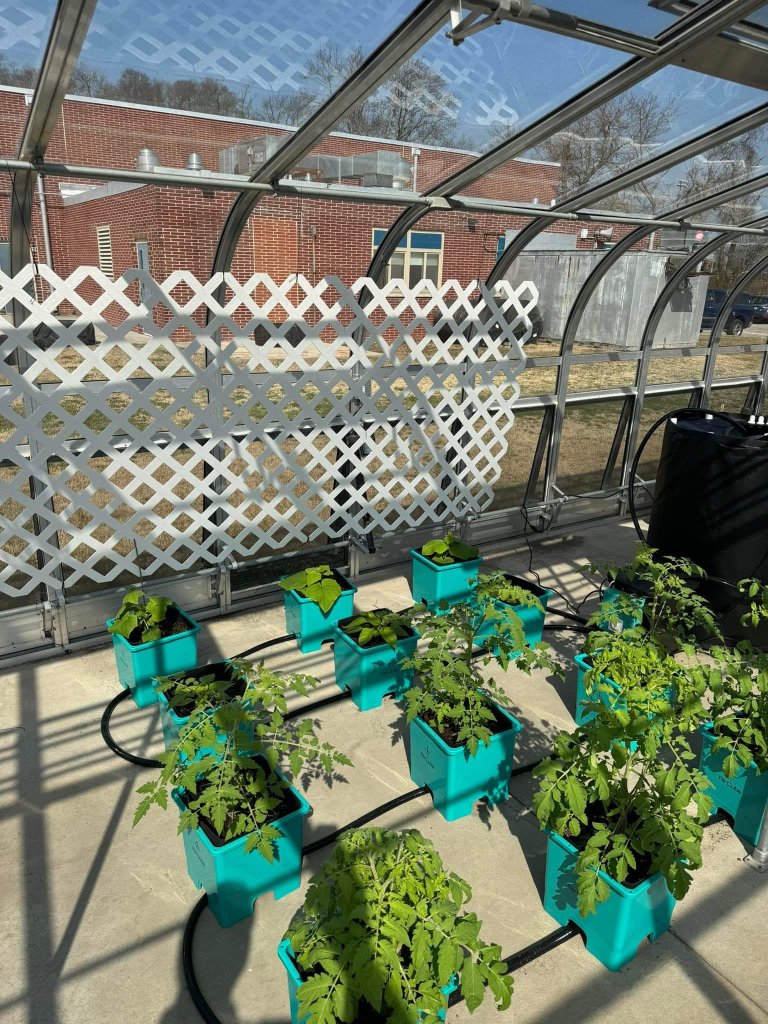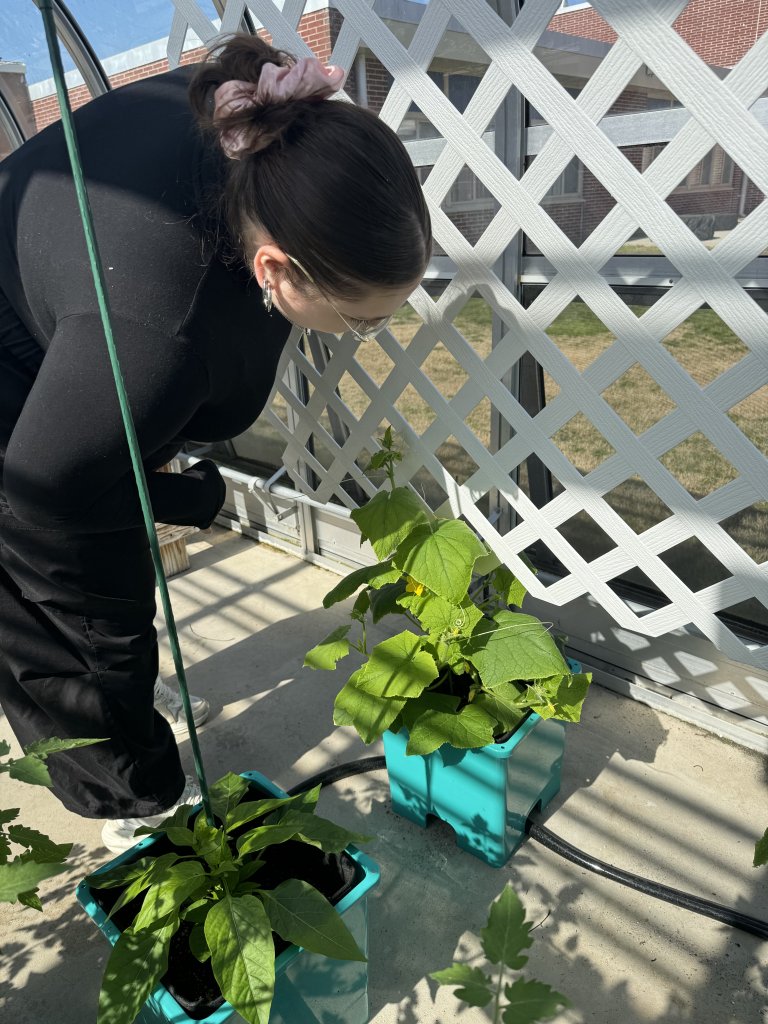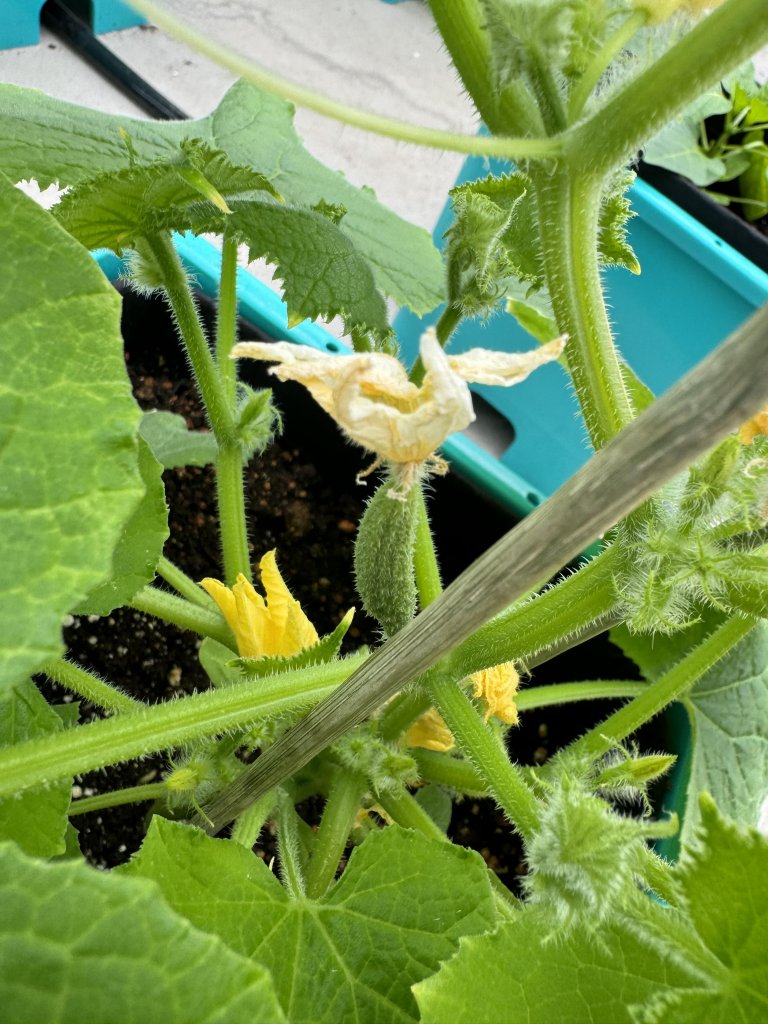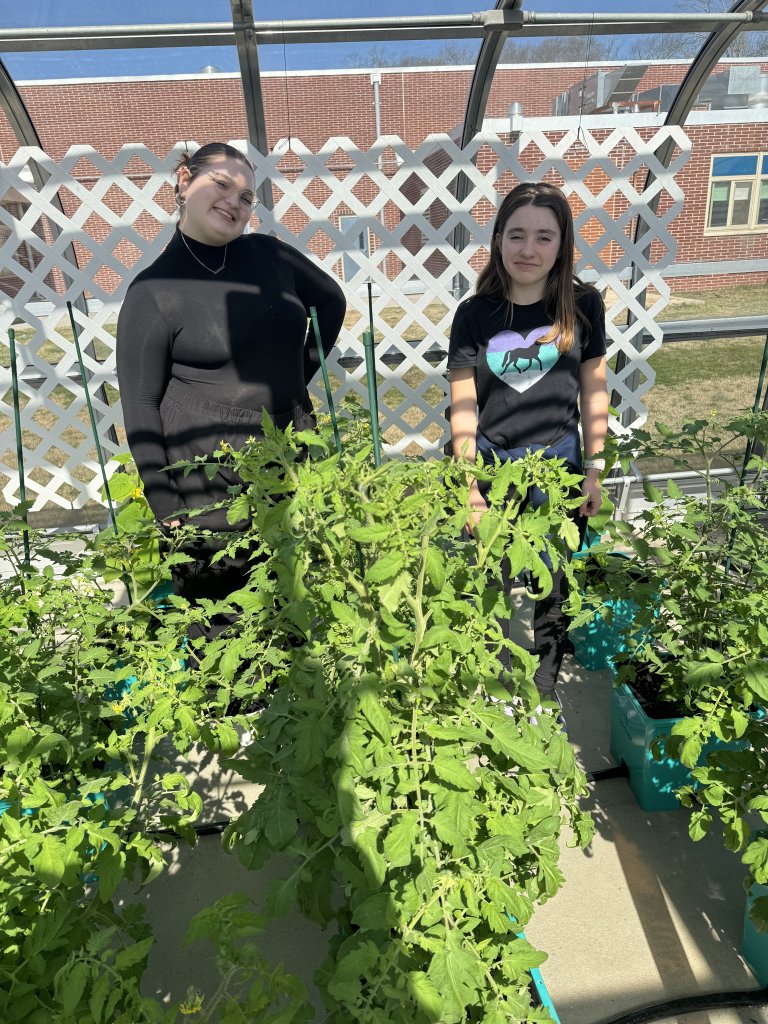LOWER TOWNSHIP — Lower Cape May Regional High School students have taken farm-to-table to heart this year, growing herbs, lettuce, beefsteak and cherry tomatoes, peppers and cucumbers for their culinary program, cafeteria and Life Skills class.
In addition, a freshwater shrimp tank has been introduced to the greenhouse as part of the Marine Biology class. The shrimp raised will be utilized in the school’s culinary endeavors, further enriching the educational experience and promoting sustainability initiatives within the school community.

The greenhouse has been a part of the Experiential Science course for approximately 15 years, seeing the cultivation of common garden plants for the school’s spring plant sale, herbs for the herb sale and poinsettias for the holiday sale.
But the school staff wanted to expand its operations.

Kevin Hildebrandt, a special education teacher who took over responsibility for the greenhouse this year, said the farm-to-table project uses hydroponics to grow produce with sustainable energy. The students use their math and science skills to monitor growing conditions.
“We wanted to try something new,” Hildebrandt said about the program. Students grew lettuce last year, using a lottery system to determine who could take the greens home to eat.
“Last fall, we started growing herbs, which were used in the recipes by our cafeteria staff,” he continued. “Now, we are growing tomatoes, cucumbers and bell peppers to use in our programs.”
Hydroponics is the use of mineral-based water to grow plants instead of soil. It might sound like “space age” science, but it isn’t that new: In the 10th century, the Aztecs were reportedly using floating gardens in nearby lakes, and the Chinese utilized hydroponics for rice fields devoid of soil in the 13th century. By the 16th century, Belgian Jan van Helmont recorded the earliest known science-based research on hydroponics.
LCMR’s hydroponics system is an ebb-and-flow grow system with fabric pots in a bucket design. Hildebrandt explained that as the roots reach the fabric walls of the pot, they penetrate and grow into the breathable fabric.
Once penetrated, the roots are exposed to air, which causes the tips of the root to dehydrate and naturally prune themselves. This natural pruning process forces the roots to grow “tons” of lateral fibrous feeder roots that are incredibly effective in taking in water and nutrients, resulting in a plant that grows healthier and more vigorously.

The system can be set to water as often as needed, recycling some 100 gallons throughout. “Cucumbers and tomatoes don’t like water on their leaves,” Hildebrandt said, “so this allows the nutrients to go directly to the roots. The system pulls the water out after 15 minutes so the roots aren’t sitting in water or the plants aren’t watered too much.”
Without oxygen, the plants can’t absorb nutrients across the cell walls and roots, so the system’s actively drawing all of the water out of the bucket pulls vital oxygen into the root zone.
In addition, less dirt and topsoil are needed in the system, which requires the students to monitor nutrient levels. “The leaves on the cucumbers were turning yellow at the edges,” Hildebrandt said, “so we had to figure out what was causing this. Was it too much water? Not enough nitrogen in the soil? What should we do? These are all things the students have to look at to figure out how to resolve.”
Pollination, so far, has taken place through the fan system that circulates the air in the greenhouse. Hildebrandt said, “So far, pollination hasn’t been a problem, but if it does become an issue, ladybugs are an option for us to use.”

Although the system can handle up to 36 buckets, so far the school has 12 buckets because of space limitations, each with a plant. The plan is to keep the plants going year-round, providing local food banks with the produce during the summer.
“If you’ve been to EPCOT at Disney you may have visited the Living With the Land exhibit and seen how they are using hydroponics to grow vegetables,” Hildebrandt said. “Well, we have our own greenhouse doing it here, bringing healthy foods into the schools and learning how to use them.”








